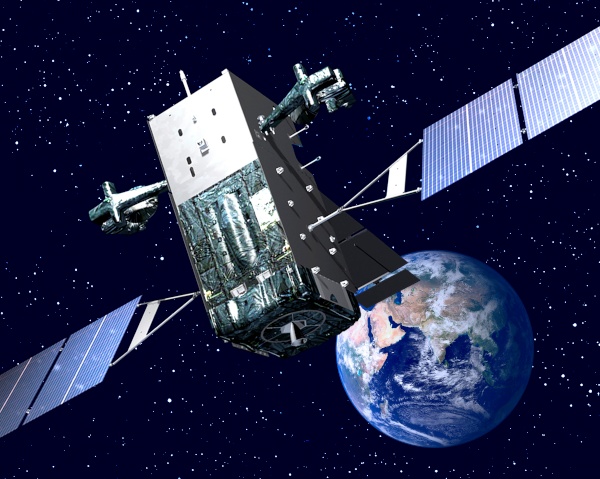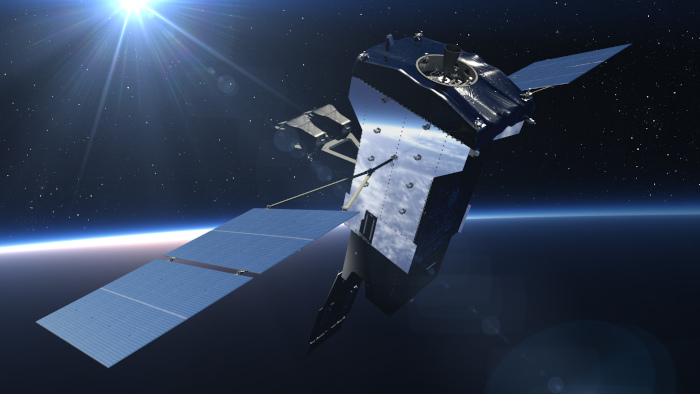Lockheed Martin LS-16 SBIRS
The SBIRS (Space-Based Infrared System) program was begun in 1996 to replace the DSP (Defense Satellite Program) satellites. Originally, SBIRS was to have to components, named SBIRS-High for satellites in GEO and SBIRS-Low for satellites in LEO. In 2001, SBIRS-Low was taken over by the Missile Defense Agency and renamed STSS (Space Tracking and Surveillance System). Since then, the plain label SBIRS is used to refer to the SBIRS-High segment.
A total of six SBIRS GEO satellites have been launched, and all remain active as of early 2024. They have received the MDS designation LS-16A. The mission payload consists of two IR sensors. The scanning sensor provides 24/7 coverage of the Earth surface for global strategic missile warning. The so-called Step-Stare sensor has a highly accurate pointing system to provide detail coverage for dedicated mission theaters and areas of special interest.
 |
| Image: Lockheed Martin |
| LS-16A (SBIRS GEO-1 to -4) |
From GEO-5 onwards, the SBIRS satellites used a modernized bus, the Lockheed Martin LM2100M. It was originally planned to launch four satellites of this configuration, but the last two were cancelled in 2019. The U.S. Space Force instead plans to create an improved capability under its Next-Generation Overhead Persistent Infrared Program (NG-OPIR).
 |
| Image: Lockheed Martin |
| LS-16A (SBIRS GEO-5 to -6) |
| Name | Intl. Designation | Launch | Notes |
|---|---|---|---|
| SBIRS GEO-1 | 2011-019A | 07-May-2011 | Also known as USA 230 |
| SBIRS GEO-2 | 2013-011A | 19-Mar-2013 | Also known as USA 241 |
| SBIRS GEO-3 | 2017-004A | 21-Jan-2017 | Also known as USA 273 |
| SBIRS GEO-4 | 2018-009A | 20-Jan-2018 | Also known as USA 282 |
| SBIRS GEO-5 | 2021-042A | 18-May-2021 | Also known as USA 315 |
| SBIRS GEO-6 | 2022-092A | 04-Aug-2022 | Also known as USA 336 |
Launch dates of the SBIRS series
Main Sources
[1] Wikipedia: Space-Based Infrared System
[2] Gunter Krebs: SBIRS-GEO 1, 2, 3, 4
[3] Gunter Krebs: SBIRS-GEO 5, 6
[4] USSF:
Space Based Infrared System
Back to Directory of U.S. Military Rockets and Missiles, Appendix 3
Last Updated: 1 February 2024